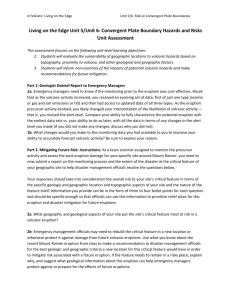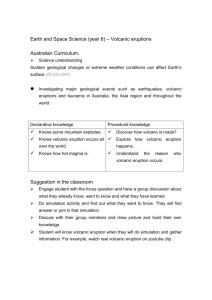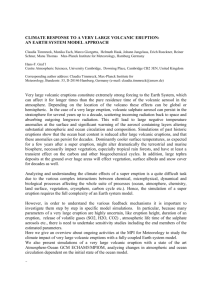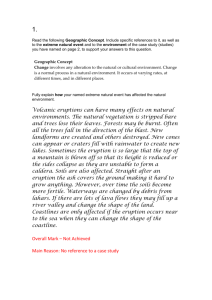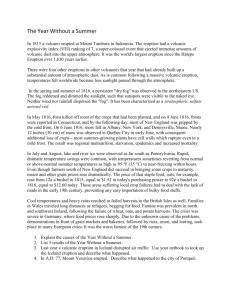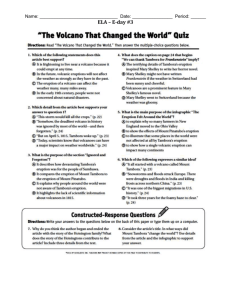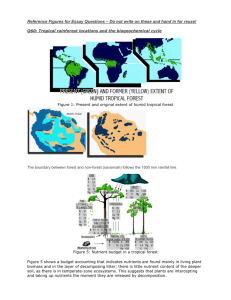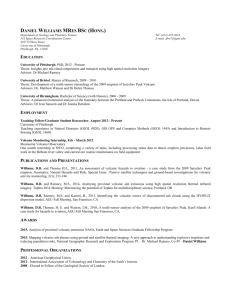Hazard and Risk at Convergent Plate Boundaries
advertisement
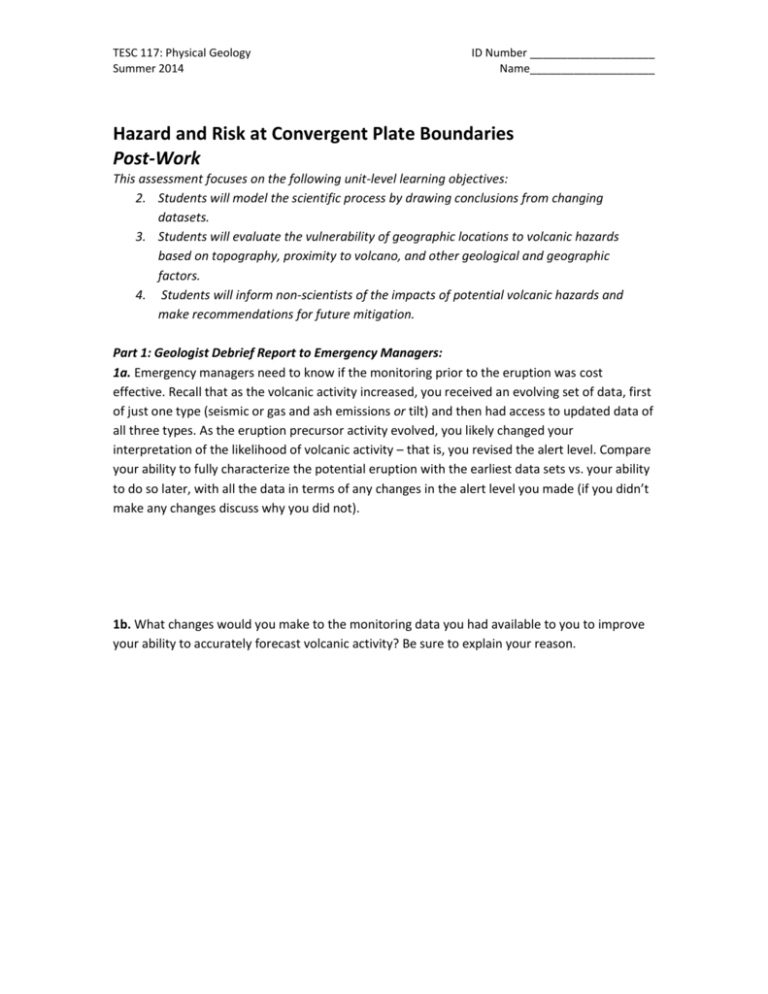
TESC 117: Physical Geology Summer 2014 ID Number ____________________ Name____________________ Hazard and Risk at Convergent Plate Boundaries Post-Work This assessment focuses on the following unit-level learning objectives: 2. Students will model the scientific process by drawing conclusions from changing datasets. 3. Students will evaluate the vulnerability of geographic locations to volcanic hazards based on topography, proximity to volcano, and other geological and geographic factors. 4. Students will inform non-scientists of the impacts of potential volcanic hazards and make recommendations for future mitigation. Part 1: Geologist Debrief Report to Emergency Managers: 1a. Emergency managers need to know if the monitoring prior to the eruption was cost effective. Recall that as the volcanic activity increased, you received an evolving set of data, first of just one type (seismic or gas and ash emissions or tilt) and then had access to updated data of all three types. As the eruption precursor activity evolved, you likely changed your interpretation of the likelihood of volcanic activity – that is, you revised the alert level. Compare your ability to fully characterize the potential eruption with the earliest data sets vs. your ability to do so later, with all the data in terms of any changes in the alert level you made (if you didn’t make any changes discuss why you did not). 1b. What changes would you make to the monitoring data you had available to you to improve your ability to accurately forecast volcanic activity? Be sure to explain your reason. TESC 117: Physical Geology Summer 2014 ID Number ____________________ Part 2 Mitigating Future Risk: Instructions: As a team scientist assigned to monitor the precursor activity and assess the post-eruption damage for your specific site around Mt. Rainier, you need to now submit a report on the monitoring process and the extent of the disaster at the your geographic locations to help disaster management officials resolve the questions below. Your responses should take into consideration the overall risk to your site’s critical feature (the parts of your site outlined in red on the maps) in terms of the specific geologic and geographic location and topographic aspects of your site and the nature of the feature itself. Information you provide can be in the form of 3-4 bullet points for each question and should be specific enough so that officials can use this information to prioritize relief plans for this eruption and disaster mitigation for future eruptions. 2a. What geographic and geological aspects of your geographic locations put them most at risk in a volcanic eruption? 2 TESC 117: Physical Geology Summer 2014 ID Number ____________________ 2b: Emergency management officials may need to rebuild critical features of your geographic locations in a new location or otherwise protect them against damage from future volcanic eruptions. Use what you know about the recent Mount Rainier eruption from class to make a recommendation to disaster management officials for the best geologic and geographic criteria a new location for this critical feature would have in order to mitigate risk associated with a future eruption. If the feature needs to remain in a risky place, explain why, and suggest what geological information about this eruption can help emergency managers protect against or prepare for the effects of future eruptions. 3
